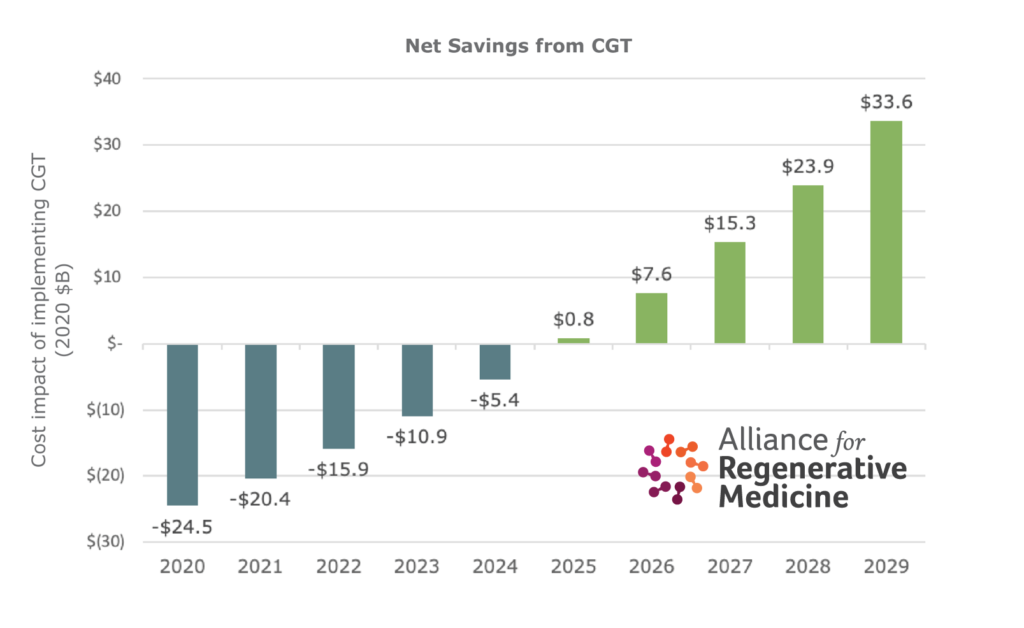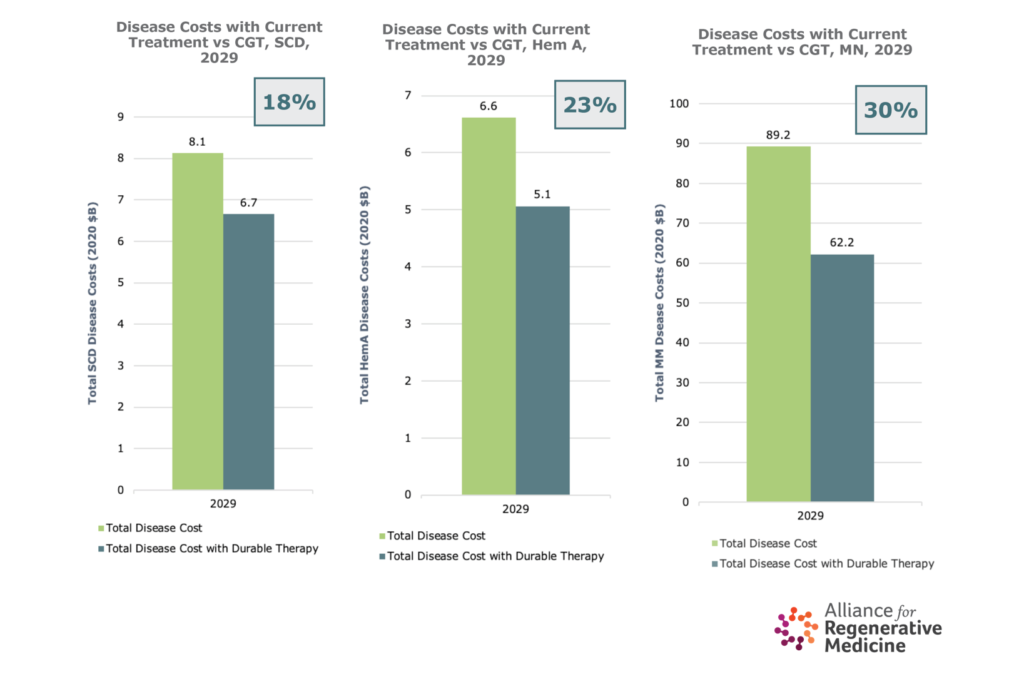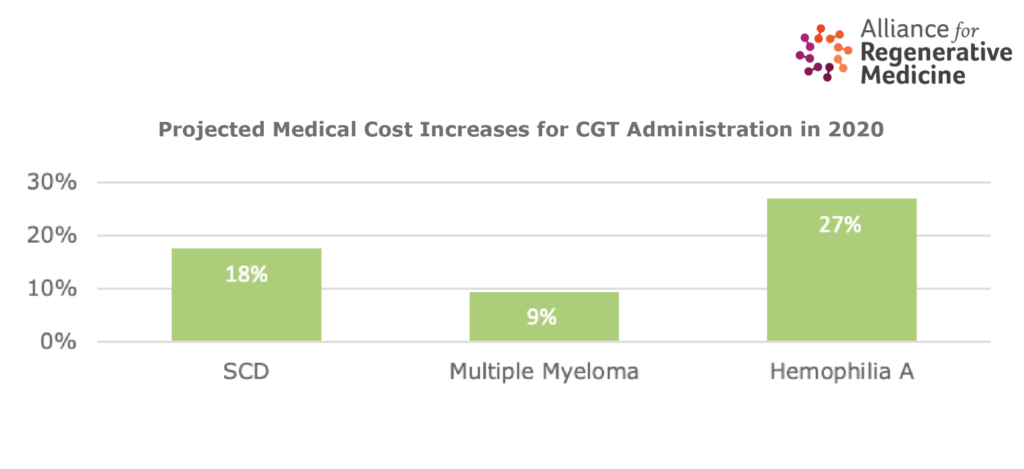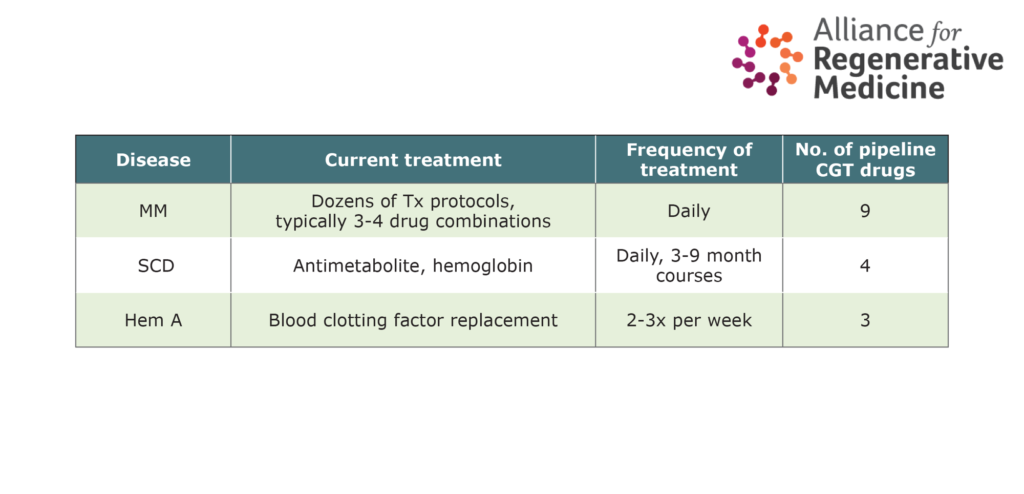
New Report Demonstrates Potential for Cell and Gene Therapies to Provide Cost Savings
As CGTs arrive on the market, payers need new models for assessing their value. These treatments could potentially end the patient’s burden of illness, resulting in cost offsets (eliminating or reducing the need for long-term treatment, hospitalizations, and other care) and productivity gains that span a lifetime.


The Alliance for Regenerative Medicine Demonstrates Potential for Cell and Gene Therapies to Provide 10-Year Cost Savings to the Healthcare System
Produced in collaboration with the Marwood Institute, this report calculates the potential cost savings that a durable cell or gene therapy could provide when treating patients with multiple myeloma, hemophilia A, or sickle cell disease. Under the current standard of care, these three disease states are projected to cost the United States healthcare system $163B per year by 2029.
Key findings include:
- The total cumulative loss of patient and caregiver productivity from 2020 – 2029 for these three disease states from 2020 – 2029 is expected to amount to approximately $151B.
- The total potential savings of cell and gene therapies range from 18 to 30% in annual total disease costs and productivity. This represents an aggregate cost savings of more than $33B by 2029.
- The modeled cost savings were highest in multiple myeloma patients ($27B in cumulative savings per year by 2029) due to the high cost of the current standard of care and to greater productivity losses experienced by the adult children caregivers of older patients.
- Innovative financing models, such as subscription models, payment-over-time, and value-based payments, are needed to help payers offset the potentially high upfront costs of these therapies and realize longer term cost-savings.





